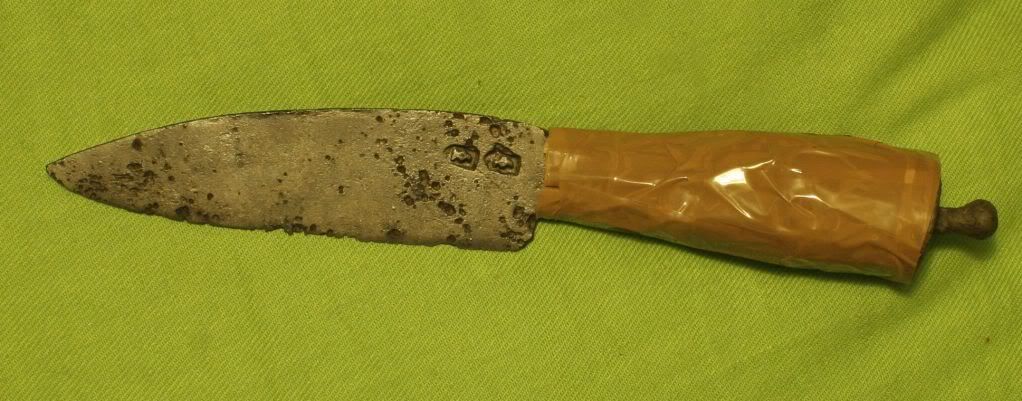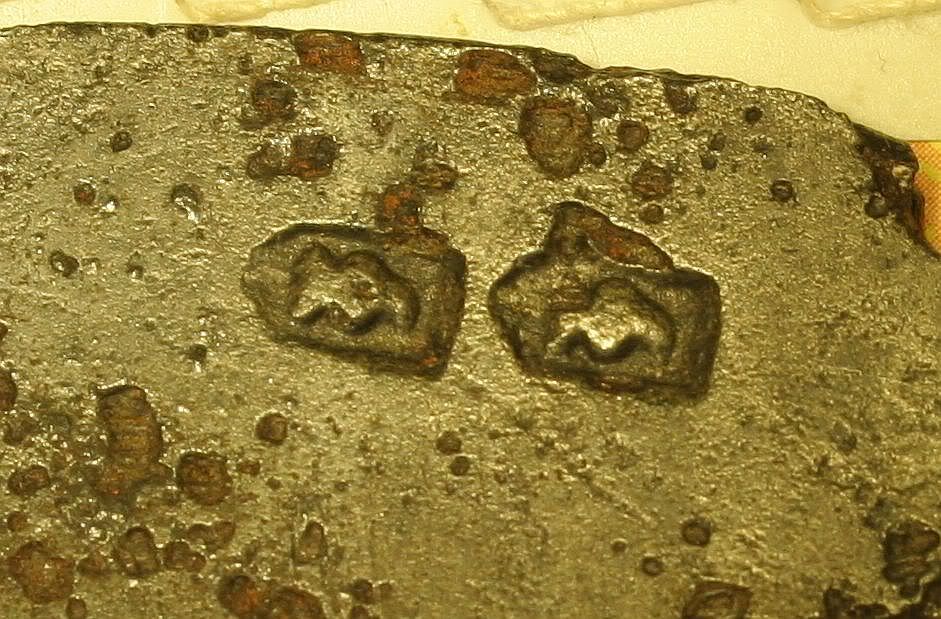
 |
|
|
|
|
#1 |
|
Member
Join Date: May 2006
Posts: 7,015
|
Here's another Jawa kitchen knife.
This is my wife's mincer, for making big pieces of meat into smaller pieces. Weight 600grms, overall length 14.5" Made in Koripan, Jawa Tengah. |
|
|

|
|
|
#2 | |
|
Member
Join Date: Jan 2005
Posts: 478
|
Quote:
|
|
|
|

|
|
|
#3 |
|
Member
Join Date: Dec 2004
Location: Santa Barbara, California
Posts: 301
|
On a tour, I stopped in a large outdoor market in Chang Mai. A butcher there was using this, or something like it. I knew I had to have one.
Couple of days later I stopped along the road in a little village where they specialize in blacksmithing. One of the smiths was just putting the finishing touches on this. 16 inches long, blade 9 inches long, 3 inches wide. it weighs 1 1/2 solid pounds. And yes, I do use it occasionally. The last time I used it was to take apart a large fish. Heavy blade. The spine is a quarter of an inch thick at the handle. It can be used as a throwing knife too, since it's heavy enough that no matter how it hits it'll hurt! |
|
|

|
|
|
#4 |
|
Member
Join Date: Dec 2005
Location: Silesia, Poland
Posts: 41
|
I cut meat with flint knives today. They are replicas of neolithic knives from Central Europe. Flint cuts like nothing else - really outstanding experience.
 http://www.youtube.com/watch?v=1TNAVykyePc |
|
|

|
|
|
#5 |
|
Member
Join Date: May 2006
Posts: 7,015
|
MROSS
No, made from a truck spring. Re flint knives I understand that a few years ago --- perhaps around 1990 --- there was a preference amongst some surgeons for knapped flint blades for some surgical procedures. I do not know if this still applies. |
|
|

|
|
|
#6 |
|
Member
Join Date: Dec 2005
Location: Silesia, Poland
Posts: 41
|
Recently I bought on a flea market in Poland such a knife:
[IMG]  [/IMG] [/IMG] It is 33cm (13inches) long and weighs 380g (13.5oz). Handle is made of horn. No idea how old is it and what is the provenance? |
|
|

|
|
|
#7 |
|
Member
Join Date: Dec 2005
Location: Silesia, Poland
Posts: 41
|
This piece comes from Bavaria, Southern Germany. It was made in 1400s (?) and is in a pretty nice shape. I almost think of sharpening it. I made a temporary hilt out of paper and some tape just to get feel of it. It is 22cm long (8.5 inches). I think it could be a nice kitchen or personal knife. What could be an original shape of the handle???[IMG]
 [/IMG] [/IMG]  What could be these maker`s marks? |
|
|

|
|
|
#8 | |
|
Member
Join Date: Aug 2007
Posts: 865
|
Quote:
http://www.youtube.com/watch?v=Tcgt_NsPq3w |
|
|
|

|
|
|
#9 |
|
Member
Join Date: Mar 2012
Posts: 422
|
A couple of traditional Korean kitchen knives. The larger one is modern, traditional style, forged from railway sleeper steel. It's inspired by the successful drama series http://en.wikipedia.org/wiki/Dae_Jang_Geum about a Korean woman who became a palace cook.
The smaller one is, I think, an antique Korean kitchen knife. The handle is natural wood, and ergonomically chosen. I haven't used this one yet. The modern one is a nice kitchen knife. A few weeks ago, I gave it a quick sandpaper sharpen; before that, it just had the original edge. It was nice and sharp before; now it is nice and very sharp. The last time I used it, I cooked an ancient Babylonian lunch. My main knife block is populated by mostly Japanese knives. I need to make a larger block that fits my Chinese knives. I don't think of those as ethnographic, but just another style of modern kitchen knife. Korean knives, OTOH, don't seem to be used in modern Korean kitchens. |
|
|

|
 |
|
|